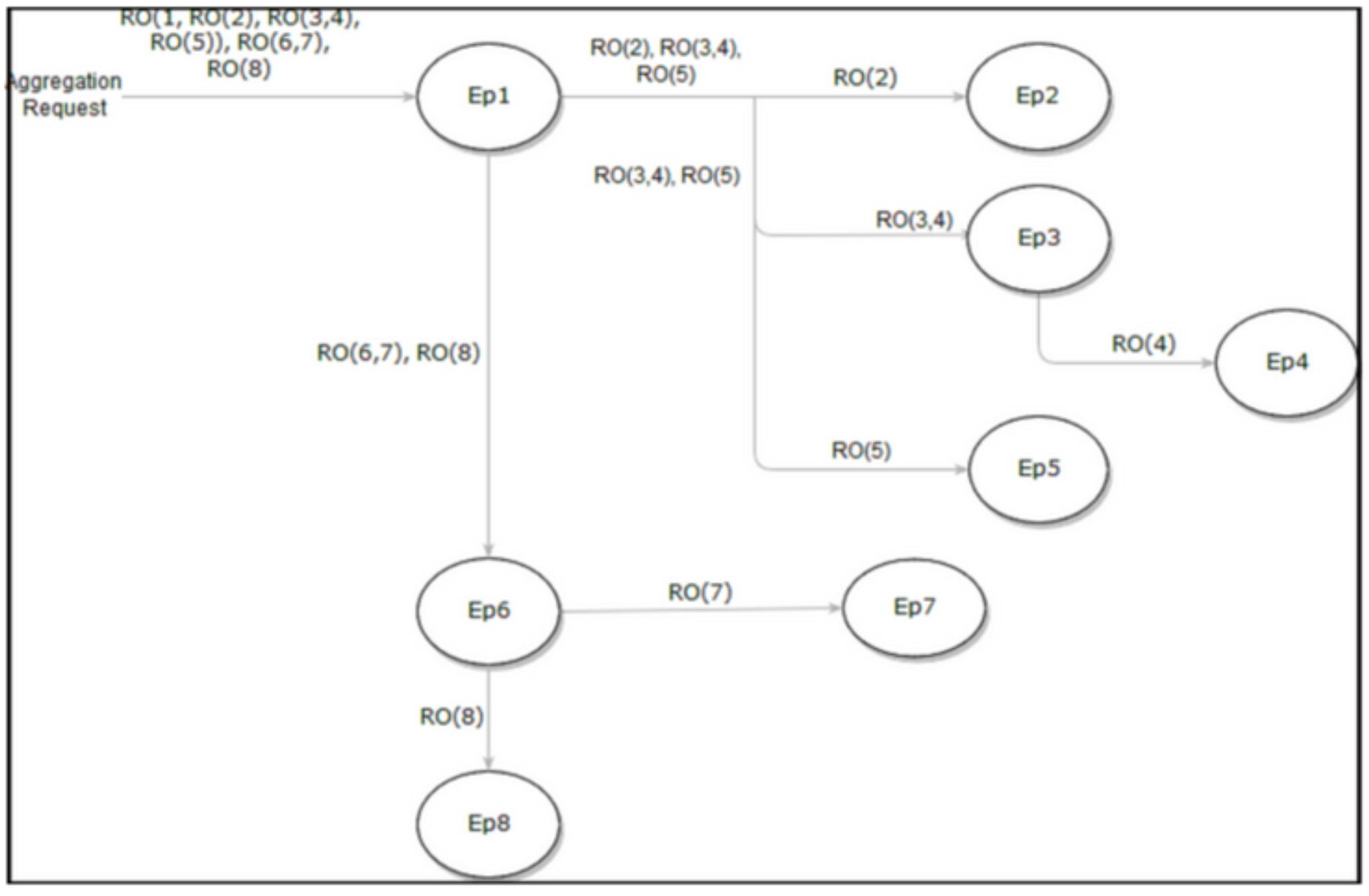Multiple Independent Endpoints
Web Services allows aggregation from multiple independent endpoints. The Web Service depends upon the Operation Type and the Parent Endpoint configuration to determine whether the endpoints of type Aggregation or Get Object must be executed independently.
Note
This feature is supported on IdentityIQ version 8.0 Patch 5 and later.
For more information, refer to Operation-Specific Configuration Parameters.
-
When Aggregation and Get Object endpoints need to aggregate attributes from multiple endpoints in a chained manner, the administrator must configure the parent endpoint name in every child endpoint. There has to be a dependency between the first and subsequent endpoints. The parent endpoint must be explicitly configured using the Parent Endpoint configuration tab.
-
If multiple child endpoints are configured for any given endpoint, then the sequence of execution of child endpoints is determined by the sequence in which they have been configured in the application.
For example, if account aggregation requires attributes from four different endpoints (EP1, EP2, EP3 and EP4), then:
-
EP1 aggregates userId and primary email
-
EP2 aggregates personal information using userId
-
EP3 aggregates skill ID information using primary email
-
EP4 aggregates skill name using skill ID from EP3
Where EP = Endpoint and RO = Resource Object/Account object
-
Configuring Multiple Independent Endpoints for Aggregation
-
For a target system where accounts are aggregated from multiple endpoints and there is no relationship between such endpoints, you can configure Web Services to aggregate information from independent endpoints.
-
Each endpoint can be configured independently using the same Operation Type. No parent endpoint configuration is required.
-
Every independent endpoint can have a paging of its own, if applicable.
-
Every endpoint will collect resource objects from the configured Web Service. Upon completion of collecting all information, the next independent endpoint will be triggered for collecting resource objects.
For example, if there are two endpoints EP1 and EP2, then EP1 aggregates accounts from a certain geographic location and EP2 aggregates from another.
Endpoint Name
Child Endpoint(s)
Returns
EP1
EP2, EP3, EP5
RO(1, RO(2), RO(3,4), RO(5)), RO(6,7), RO(8)
Independent
EP2
-
RO(2)
Child of EP1
EP3
EP4
RO(3,4)
Child of EP1
EP4
RO(4)
Child of EP3
EP5
RO(5)
Child of EP1
EP6
EP7
RO(6,7), RO(8)
Independent
EP7
RO(7)
Child of EP6
EP8
RO(8)
Independent

Note
The Parent Endpoint configuration tab displays for